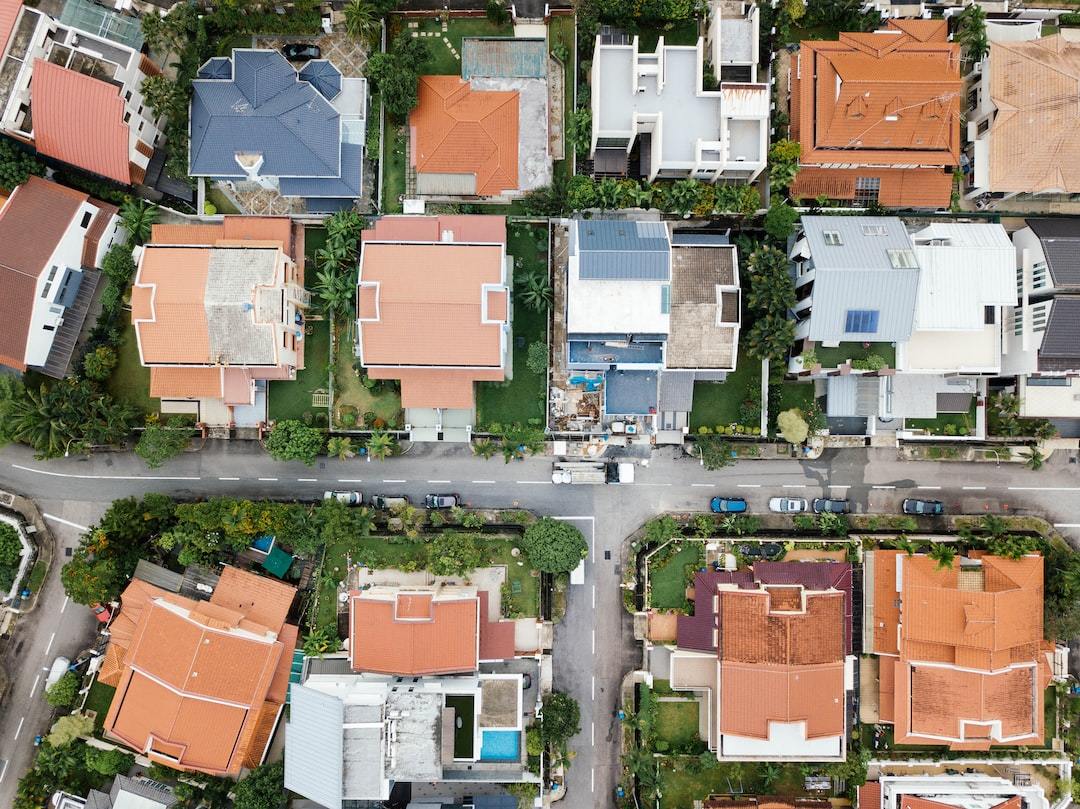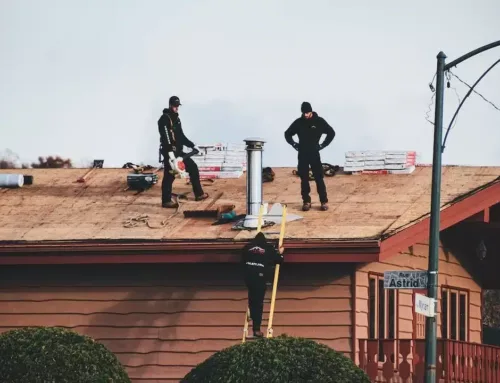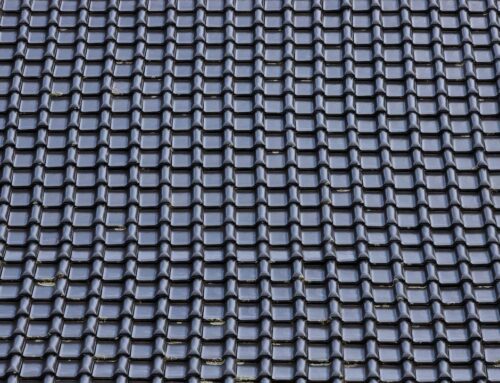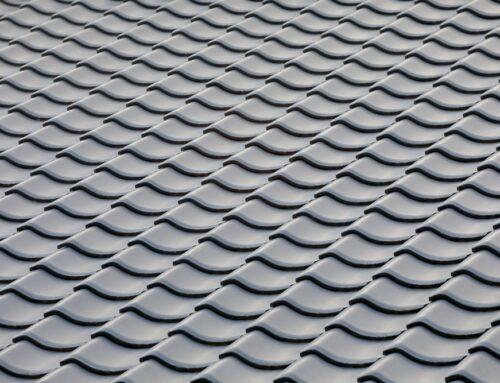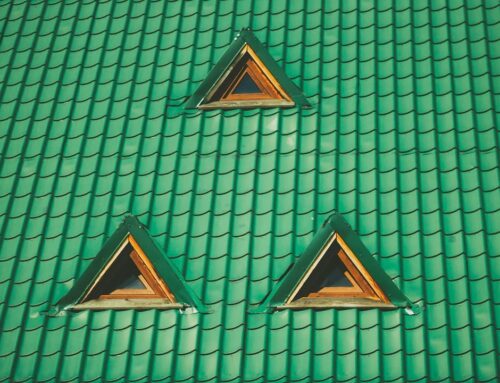What does hail damage look like on a roof? This question often puzzles homeowners after a severe storm.
Hailstorms, with their icy pellets, can cause significant harm to your home’s exterior, particularly the roof. But identifying this damage isn’t always straightforward.
The impact of hail on a roof may be quite diverse, contingent upon aspects like the size and solidity of hailstones or even what kind of roofing material is in place.
To protect your property from further deterioration, it is crucial to recognize what does hail damage look like on a roof, so you know when professional help is needed.
Identifying Hail Damage: What Does It Look Like on a Roof?
Hail damage is a serious threat to your roof’s integrity, particularly when large hailstones are involved. These larger stones can cause substantial harm to shingles, vents, gutters, and other components of the roofing system.
If you believe that your home has sustained hail damage following a storm event, reaching out to your insurance company should be an immediate priority. They can help you go through the steps of submitting an insurance claim for destruction to your property caused by strong winds or hail impacts.
What Does Hail Damage Look Like on a Roof?
Hail damage on a roof can manifest in various ways. Some common signs include:
- Dented or cracked shingles
- Missing granules on the shingles
- Exposed underlying layers of the roof
- Indentations or soft spots on the roof
- Loose or damaged flashing
Prompt action is necessary to avoid further destruction if indentations, soft spots, or loose or damaged flashing are detected on the roof after a hailstorm.
The Impact of Hail Damage on a Roof
The size and density of falling hailstones significantly influence the extent and severity of roof damage they inflict. Larger stones tend to create more significant damage compared with their smaller counterparts.
A sizable stone plummeting at high velocity could dent or even pierce common roofing materials like asphalt shingles or metal roofs, causing both instantly visible destruction as well as reducing the overall lifespan of your roof.
Why You Shouldn’t Ignore Hail Damage
While hail damage may not always be immediately apparent, it’s crucial not to ignore it. Even small dents or cracks can compromise the integrity of your roof and make it more susceptible to leaks and further damage. By addressing hail damage promptly, you can prevent more extensive and costly repairs down the line.
Furthermore, addressing hail damage promptly can help you file an insurance claim if necessary. Document the damage with photographs and consult with a professional roofing contractor to assess the extent of the damage and provide an estimate for repairs.
Conclusion
Identifying hail damage on a roof is essential for maintaining the integrity of your home. By recognizing the signs of hail damage and taking prompt action, you can protect your property and avoid costly repairs. Don’t ignore hail damage – address it promptly and consult with professionals to ensure your roof remains in good condition.
Don’t turn a blind eye to hail damage on your roof. Small dents or cracks can escalate into costly repairs. Swiftly identifying and addressing the signs – like dented shingles, missing granules, exposed layers, indentations, or damaged flashing – can save you from leaks, structural issues, and potential insurance claim denials.
Visible Signs of Hail Damage from Ground Level
Hail storms can cause a variety of damage to your property, with some signs being evident even at ground level. Knowing what to look for after a hail storm is crucial in identifying any potential roof hail damage promptly.
Distinguishing Between Normal Wear and Tear vs. Hail Damage
A common challenge homeowners face is differentiating between normal wear and tear versus actual sustained hail damage on their roofs or other parts of the house. While both might result in similar effects such as dents or cracks, there are key differences that set them apart.
Normal wear and tear often result in uniform patterns over time due to exposure to environmental factors like sun, rain, wind, etc., while roofing systems damaged by high winds during severe weather conditions typically exhibit random spots where the impact marks have occurred – this lack of discernible pattern could be indicative of significant roof shingles’ damages caused by large-sized hails hitting randomly across various areas leading towards substantial structural issues if not addressed timely enough.
An increase in granules found within gutters following a storm also suggests possible asphalt shingle roof degradation; these tiny fragments coming off signify they’ve been impacted heavily possibly needing immediate attention before further escalation causing more serious problems and eventually requiring full replacements instead of just minor repairs otherwise sufficing under circumstances wherein early detection was done properly right from the start avoiding complications arising subsequently thereafter.
Finding Evidence Of Roof Damage From The Ground Level
Beyond inspecting roofing materials directly for visible signs indicating their presence like cracked shingles resulting from high winds accompanying extreme weather events, especially those involving larger-sized hails impacting severely onto surfaces, potentially causing cosmetic damages initially but gradually leading towards more serious structural ones later on if left unattended without proper repairs done immediately upon identification of initial symptoms suggesting so. It’s equally important to check the surrounding areas around the home too, seeking if your neighbors got hit by hail too.
Spotting hail damage on your roof isn’t rocket science. Look for random dents or cracks – a clear sign of hail impact, not just regular wear and tear. Notice an uptick in granules in your gutters? Your shingles may be crying out for help. Don’t forget to check the ground around your home too; evidence can lurk there
How Hail Impacts Vary Across Different Roofing Materials
The type of roofing material you have plays a significant role in how it absorbs hail impacts. From asphalt shingles to wood, each has its unique response and damage pattern when hit by these icy projectiles.
Hail Damage on Asphalt Shingle Roofs: What To Look For?
Asphalt shingles are commonly used across Kansas City homes due to their durability and cost-effectiveness. However, they’re not immune to roof hail damage. The aftermath of a storm often leaves behind dents or depressions scattered randomly across the roof surface – an unmistakable sign that your home’s protective shield has sustained hail damage.
In addition, large-sized hails can cause granule loss from the shingles’ exterior layer exposing underlying asphalt, which accelerates deterioration while increasing susceptibility towards leaks over time.
Detecting Hail Impact Marks On Wood Shingle Roofs
Wooden roofs react differently compared to their asphalt counterparts under similar conditions; signs aren’t always immediately apparent, but if left unchecked, they could lead to severe structural issues requiring costly full roof replacement later down the line.
To identify potential damages caused during high winds or storms, look for small indentations running parallel along splits within wooden planks – this is where most impact marks tend to appear after being struck by falling hails carried away with gusts during such weather events.
Facing The Winds Of Change During A Storm
Beyond just identifying different types of damages based on roofing materials used, wind direction also influences the extent as well as the severity associated with property destruction caused by severe weather phenomena like thunderstorms or tornadoes. Even without direct hits, strong gales can drive icy particles at angles against house exteriors, causing more extensive harm than expected, especially around edges where protection is minimal compared to flat surfaces facing upwards directly into the sky above.
Roofing material type greatly influences hail damage patterns, with asphalt shingles showing dents and granule loss while wood planks may have subtle indentations. Wind direction also plays a role in the extent of damage, potentially causing more harm to house edges than flat surfaces.
Navigating Insurance Claims for Hail-Damaged Roofs
When your roof sustains hail damage, dealing with the insurance claim can be a complex process. Nevertheless, gaining knowledge on how to tackle this predicament can assist you in dealing with it more proficiently.
Steps To Take Before Starting The Insurance Claim Process
The first step after identifying roof hail damage is to promptly contact your insurance company. This immediate action helps ensure that they will process your claim swiftly and efficiently.
Besides contacting them immediately, document all evidence of the hail storm’s impact on your property thoroughly. Capture photographs or videos showing visible signs such as cracked shingles or dents on metal roofs, which are clear indicators of significant damage caused by hail impacts.
Maintaining a detailed record of dates and times associated with each stage in this process – from when you first noticed the damage until repairs are completed – could prove useful during discussions about compensation under policy coverage limits with adjusters.
If there’s disagreement over assessment results provided by an insurer-appointed adjuster regarding the extent or cost estimates related to sustained damages, consider seeking a second opinion from an independent roofing contractor who specializes in handling cases like yours where homeowners have experienced severe weather events involving high winds along with large-sized hail.
Spotting hail damage on your roof is just the start. Contact your insurance company promptly, document every detail of the damage and process, and don’t hesitate to seek a second opinion if you disagree with an adjuster’s assessment. Remember: acting fast can save you a world of trouble later.
Why Pyramid Roofing is the Right Choice for Your Hail Damage Repairs and Replacements
When your home suffers hail damage, it’s crucial to select a seasoned roofing contractor. In Kansas City, homeowners trust Pyramid Roofing for all their needs – from roof repairs due to sustained hail damage, full roof replacements, or new installations. Our reputation is based on both our quality of work and reasonable pricing.
We recognize that dealing with roof damage can be overwhelming. Our dedicated team of professionals aims to simplify this process by offering comprehensive solutions tailored specifically to each homeowner’s unique situation.
The Value of a Complimentary Post-Storm Roof Inspection
A storm may leave subtle signs of sustained damage on your rooftop that aren’t immediately apparent. This makes post-storm inspections critical in identifying any potential issues early on before they escalate into severe property damages such as leaks or structural weaknesses caused by high winds or large-sized hails during storms.
At Pyramid Roofing, we offer free professional inspections where trained experts meticulously assess every inch of your rooftop looking out, particularly for telltale signs like impact marks indicative of recent hail hits.
This thorough inspection helps us provide accurate recommendations whether you need minor repairs only or if significant hail impacts necessitate an entire replacement – always prioritizing safety and longevity over quick fixes.
Making Insurance Claims Hassle-Free
We go beyond simple repair works; assisting clients throughout their claim processes has been part and parcel of what we do here at Pyramid Roofs.
Our services include helping document evidence showcasing the extent and severity of effects left behind following major storms right through negotiating appropriate compensation amounts based on actual damages incurred.
In essence, if you seek experienced partners who prioritize client satisfaction even amidst challenging circumstances, then look no further than choosing us today.
When hail hits, Pyramid Roofing in Kansas City is your go-to for top-tier repairs and replacements. They offer free post-storm inspections to catch hidden damage early on, provide fair pricing, and even help navigate the insurance claim process. In short: they turn a roofing crisis into smooth sailing.
The Long-Term Effects of Ignoring Hail Damage on Your Roof
Overlooking hail damage on your roof may seem like a minor issue initially, but it can lead to severe complications in the future. It’s not just about aesthetics; these damages compromise the structural integrity of your roofing system and could necessitate expensive repairs or even full replacement if left unaddressed.
When Is Full Roof Replacement Necessary?
Hail storms often inflict significant damage that remains unnoticed until substantial issues arise. For instance, cracked shingles from hail impacts might allow water infiltration into your home over time, leading to mold growth and interior property damage. Similarly, dents on metal roofs can instigate rusting and degradation of roofing materials.
If such problems have been ignored for an extended period after sustaining hail damage, you might need a full roof replacement rather than simple repairs. This is particularly true when there are extensive areas with missing granules on asphalt shingles or widespread cracking and splitting of wood shingles due to repeated hail hits.
A reputable roofing contractor, such as Pyramid Roofing, will evaluate whether repair work would suffice or if a complete overhaul is necessary based on their inspection findings. They consider factors like the current extent of roof damage alongside its age before making this determination.
In case you’re faced with needing a new roof because previous storm damages were neglected for too long, remember that investing in high-quality roofing systems now could save money later by reducing future maintenance costs and potential insurance claims related to weather-related damages.
Potential Structural Issues from Neglected Hail Damage
Beyond impacting directly onto your rooftop, untreated aftermaths also pose risks to other parts of the house structure. Water intrusion through damaged sections weakens wooden support beams within walls and ceilings, causing them to rot over time and posing serious safety concerns.
Additionally, moisture buildup encourages pest infestations, further compromising structural integrity while creating health hazards via the spread of diseases and allergens throughout homes.
Post-storm inspections should never be skipped out on; they’re crucial steps towards preventing minor problems today from turning into major headaches tomorrow.
Don’t turn a blind eye to hail damage on your roof. It’s not just about looks; ignoring it can compromise structural integrity, leading to costly repairs or even full replacement. Cracked shingles and dented metal roofs invite water infiltration, causing mold growth and interior property damage. Remember, today’s minor problem could be tomorrow’s major headache.
FAQs in Relation to What Does Hail Damage Look Like on a Roof
How do I know if my shingles have hail damage?
Hail-damaged shingles often show signs such as dents, bruises, or granule loss. These damages are typically random and inconsistent in size.
What does a hail hit look like on shingles?
A hail hit on shingles can appear as a dark spot, bruise, or dent where the protective granules have been knocked off.
What does wind and hail damage look like on a roof?
Wind and hail damage may cause missing or torn shingles, cracked tiles, dented metal roofing materials, leaks inside your home, or debris scattered around your property.
Can pea-sized hail damage a roof?
No. Pea-sized hail usually doesn’t cause significant roof damage, but it’s always wise to get an inspection after any storm event for peace of mind.
Conclusion
Identifying hail damage on a roof can be tricky, but it’s not impossible.
The size and concentration of hailstones can be determinants of the level of harm inflicted.
Signs like dents on downspouts or damages to your AC unit might indicate possible roof harm from ground level.
Different roofing materials absorb impacts differently, with asphalt shingles showing random patterns of damage while wood shingles may have splits along impact marks.
Navigating insurance claims for such damages can be complex yet crucial to cover repair costs effectively.
Ignoring minor cosmetic damages could lead to severe structural issues over time requiring costly full roof replacements.
Kansas City’s trusted choice for all roofing services is here to help you identify and fix any potential hail storm-related problems.
Whether it’s an inspection after a storm or preventive measures against future storms, we’ve got you covered.
Don’t let uncertainty about what does hail damage look like on a roof prevent you from protecting your home. Reach out today!


